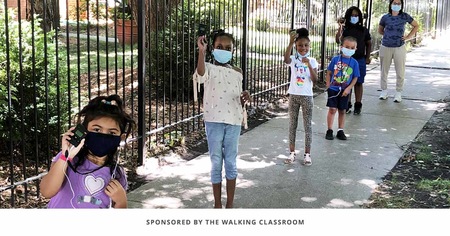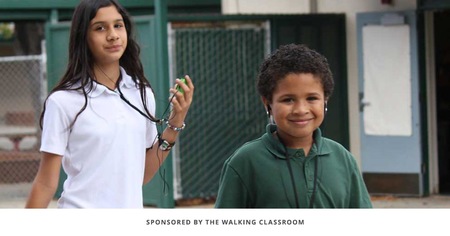- Virtual programming that keeps youth active, engaged and learning.
- Safe, in-person programming that keeps students socially connected even when physically apart.
- Or a bit of both.
Virtual programs often include way too much screen time and way too little physical activity. If you're also trying to incorporate educational content or social-emotional learning (SEL) into your afterschool program, that's another big challenge. And that's assuming your students have the technology to access your program. As teacher Jennifer Dunn put it:
"At least 50% of my students do not have the ability to participate in an online learning situation from home. Either the lack of a device or access to reliable Wi-Fi kept me from connecting with my students throughout the last nine weeks of school."
In-person programs run risks of too much exposure in close quarters. And they too struggle when it comes to supporting the classroom curriculum and SEL in a safe and healthy manner. But there are options that can help solve these issues for all three scenarios.
OST professional Earlene Rivers of Diversity Nurtures Achievements Community Youth Center said, "With COVID-19 affecting whether school is able to resume ... our program will use The Walking Classroom to aid in filling the educational gap."
The Walking Classroom was originally designed for classroom or out-of-school time environments, but it is a perfect resource for remote activities at home—with or without internet access—as well as physically distanced learning at school. The Walking Classroom can be used for:
- In-school instruction with physical distancing.
- Remote learning, with or without internet access.
- Hybrid learning—in-school programs with physical distancing and remote learning.
"I am so excited to have The Walking Classroom ... I can still get my kids out for exercise but in a fun way where I know they will keep the distance," said Kathleen Butler, a teacher in California.
When it comes to social and emotional learning, the skillset youth use to cope with feelings, set goals, make decisions, and feel empathy for others is more important now than ever.
The Walking Classroom can help bring social-emotional aspects back to your afterschool lessons without creating more work. Each podcast has a character value woven throughout the narrative, and discussion questions in the available lesson plans help guide vibrant discussions after listening.
"It adds an extra element that none of our curriculum has—it combines science and social studies with health and character development," said Shelly Friszell, a teacher in California.
Learn more about how The Walking Classroom actively engages students in virtual and hybrid learning environments.
Written by Lee Ann Obringer, Communications Director for The Walking Classroom.
Content and photo courtesy of The Walking Classroom.




